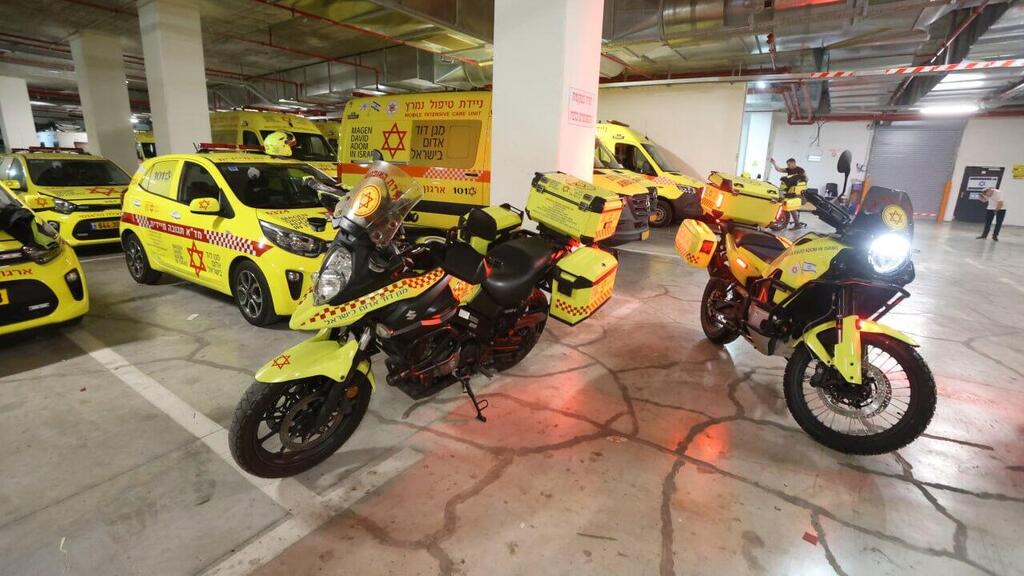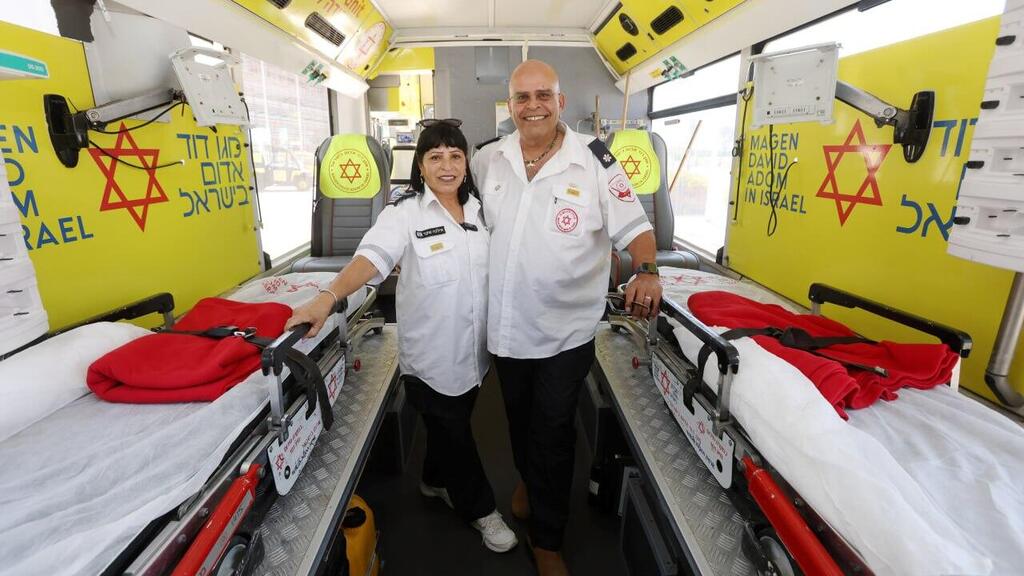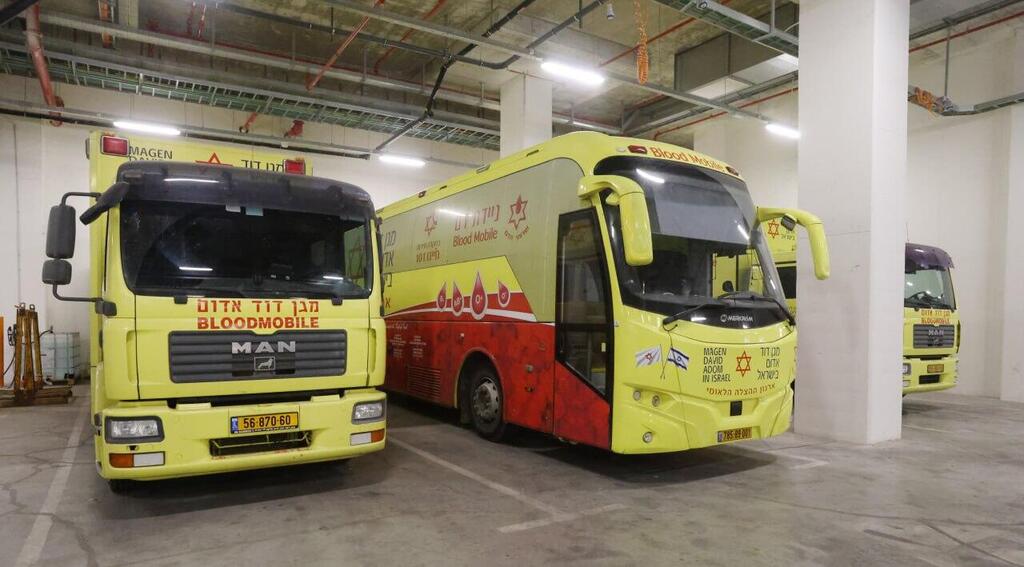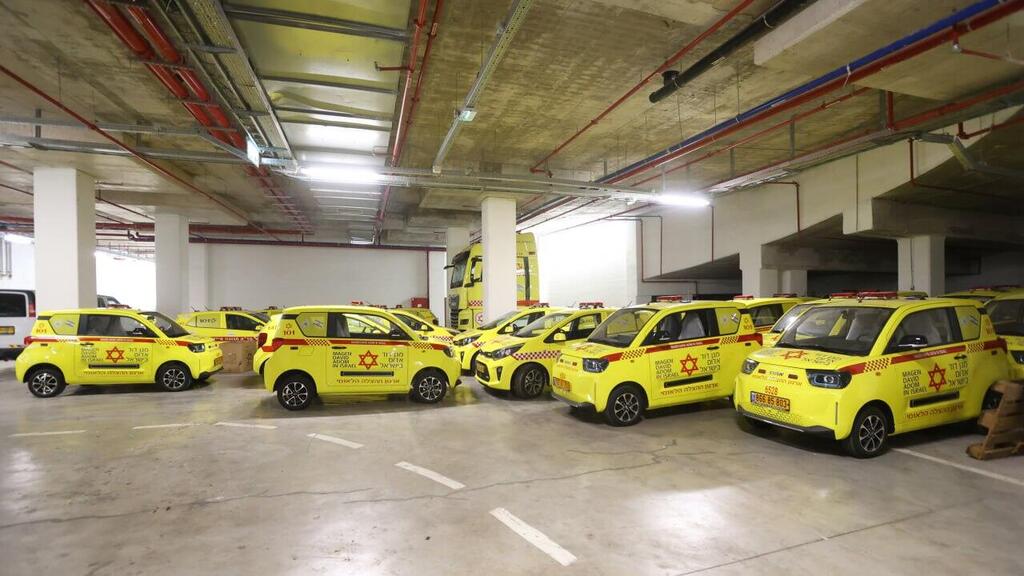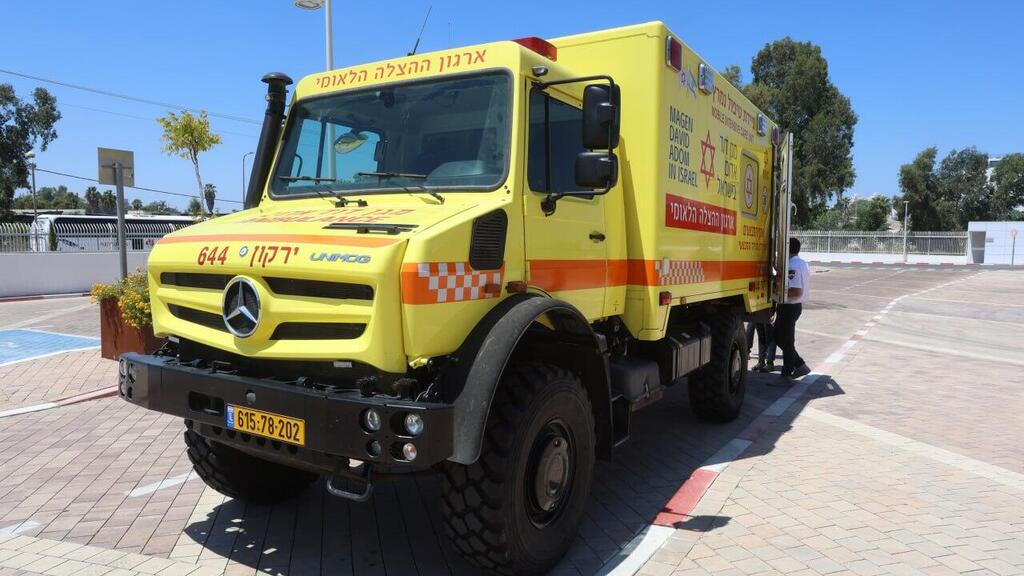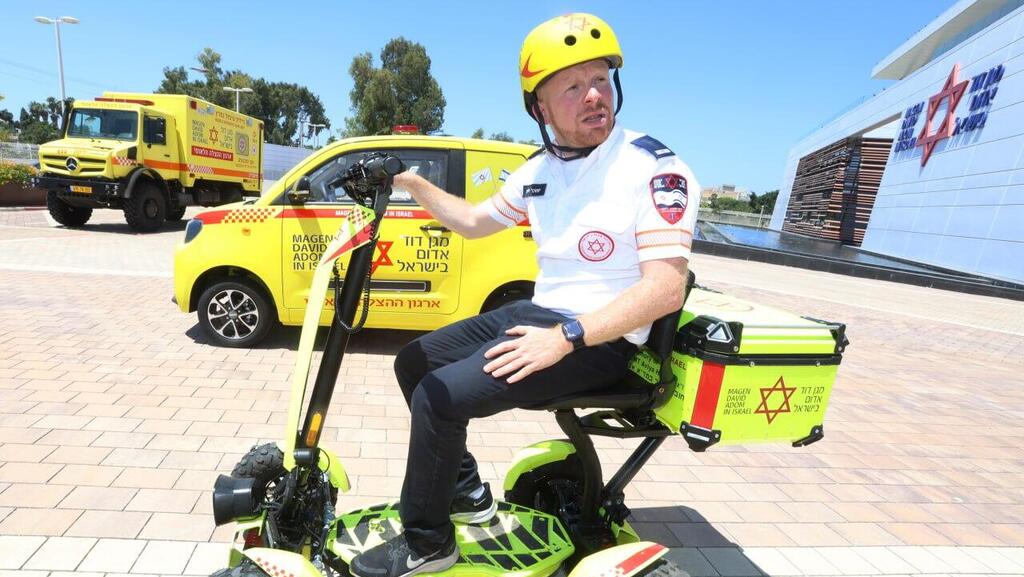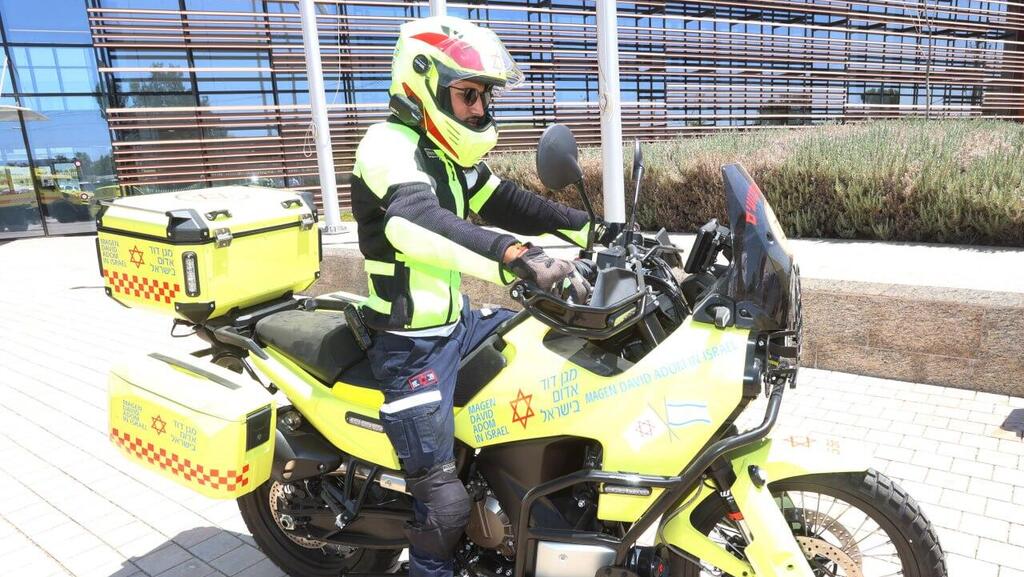Getting your Trinity Audio player ready...
During a tour of Magen David Adom’s (MDA) new blood bank in Ramla on Tuesday, the fleet of special vehicles used by the emergency service was revealed. The fleet was funded by donations, with a total cost amounting to hundreds of millions of shekels. Among the vehicles, the intensive care bus is operated by Ilana and Eddie Shaked, a married couple from Sha'arei Tikva.
"We've been married for 31 years. I started volunteering in 1988 before I was married, and Eddie joined in 2007 after serving as an officer in the traffic police," Ilana shared. "I'm a professional bus driver, having worked at the position for 37 years. It seemed only natural to give this role to professional drivers."
In addition to driving the bus, Ilana and Eddie also maintain it and even park it at their private home. "I retired from the police force at a young age, and Ilana suggested I join her at Dan Public Transport. I ended up working there for 10 years until the COVID-19 pandemic sent drivers home. I've been retired since," Eddie explained.
Buses and scooters
He added, "The bus was initially built because of COVID-19 when we needed to transport many people from nursing homes or hospitals at once. It can transport and treat 13 patients at any given time, including two lying down. It was designed to replace 11 ambulances and two intensive care units. The bus is equipped with oxygen for all patients, intensive care unit equipment, monitors, automatic syringes and more."
On October 7, the special MDA bus worked overtime. "I was already dressed to go to the synagogue when we got a call: 'Hello, we’re at war. Get to the bus quickly,'" Eddie recalled. "In the early hours, we didn't really know what was happening. We got the call at 7:45 a.m., and by 8:00 a.m., we were already heading south. We evacuated dozens of people that day, finishing at 1 a.m. In hindsight, we realized there were terrorists around, but we didn't know at the time."
MDA currently operates around 2,000 ambulances nationwide, including approximately 400 yellow ambulances (fully equipped with intensive care unit gear) and about 40 bulletproof ones. Additionally, MDA maintains about 250 small Picanto cars, around 50 electric vehicles and 600 motorcycles – 70 of which are operated by senior medical staff, paramedics and doctors.
The MDA’s ‘special equipment’ department includes 25 mass-casualty event vehicles (MCEVs), three Unimogs, 20 jeeps, 16 ATVs scattered across coastal cities and forests, two John Deere ATVs, an especially narrow ambulance also used in Jerusalem’s Old City and three four-wheel-drive MIA4 scooters.
The unimog
Another vehicle that isn't commonly seen but has been critical in the MDA’s operations, particularly during the events of October 7, is the "Unimog" – a four-wheel-drive truck capable of transporting four patients lying down along with two crew members, a driver and a medical aide.
Yissachar Weiss, 27, an MDA employee who started volunteering for the organization 11 years ago, explained what makes these vehicles special. "This is an extremely high-level off-road vehicle that can traverse emergency sites with collapsed structures and drive on concrete. It can get to and from anywhere," he said.
"We had an incident where a train got stuck inside a tunnel with 70 passengers. People started fainting, and we couldn't access them with ambulances or ATVs because they couldn't drive on the train tracks," he added.
“We deployed the three Unimogs and headed to the site. These vehicles are fully equipped with intensive care unit gear and the teams operating them are specifically trained and are called from home for such incidents."
Weiss, a paramedic who rides a motorcycle and drives an ambulance and the Unimog, is also one of those responsible for deploying special vehicles like this giant truck. Alongside it were two much smaller but highly effective vehicles for other situations, including the electric "Bimbulance" and the MIA4 – a type of four-wheel-drive scooter similar to those used by the police during protests.
"This vehicle is great for events like concerts or the Jerusalem Marathon," Weiss said. "It allows us to move through crowds, on beaches and along trails with equipment and is mainly used by event managers."
Regarding the Bimbulance, Weiss added: "It's a small vehicle fully equipped like an ambulance – except for a bed. It's designed for areas like Tel Aviv and essentially acts as a force multiplier for motorcycles."
Hundreds of heavy motorcycles and scooters are used by MDA volunteers across the country. Moran Abu-Shakra, 24, from Eilabun, shared, "I've been volunteering with MDA since I was 15, and have been in the motorcycle unit since I was 19. I've been passionate about motorcycles from a young age, and I combine my love for them with my work saving lives.”
“This vehicle significantly shortens our response times. It's equipped with very specific, life-saving gear like an EpiPen for allergies, tourniquets, a defibrillator and more, which allows us to save someone’s life until the ambulance team arrives. Additionally, we can also reach off-road areas and get to any injured person using the motorcycles," he added.
In fact, all 600 MDA motorcycle riders are volunteers, including doctors, paramedics and medics who often work with MDA using other vehicles like ambulances. The hours they spend on motorcycles are done on their own time. In return for their hard work and the frequent call-outs – especially during emergencies – they get to keep the motorcycle for personal use at home.
Another vehicle used by MDA for rapid response to terror attack victims is the John Deere ATV, which has been specially adapted for use in the narrow alleyways of Jerusalem's Old City. Muli Arnon, 23, a medic and ambulance driver from Jerusalem, says the vehicle, which was specifically built by a paramedic who often works in the Old City, is very effective.
"We have two of these vehicles, one in the upper quarter and one in the lower part of the Old City. It's mainly used in crowded areas where an ambulance can't enter. During attacks in the Old City, these vehicles have been extremely effective,” he said.
"It isn’t meant to take patients to the hospital; it’s designed to quickly extract the injured from the scene to a rendezvous point. Within seconds, they’re inside the ATV and being transferred to an ambulance. It’s a full-fledged four-wheel-drive vehicle; it can even climb stairs."
MDA Director-General Eli Bin said that "Magen David Adom places great importance on reducing response times to medical emergencies. MDA's advanced fleet, which includes vehicles capable of operating in complex terrains and weather conditions, brings our teams one step closer to providing rapid and professional care to patients and the injured.”
“We will continue to develop and enhance this fleet to ensure that MDA, as Israel's national emergency service, is prepared for any scenario and can reach every resident in the country,” he added.


